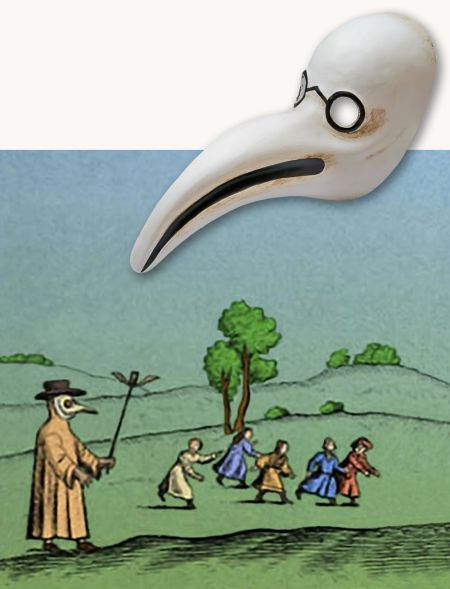

The "Plague Doctor" may be considered a mask, nowadays, but in the old times it was a sad and scary reality.
The mask with the long beak is made to keep in it substances and aromas that it was believed would have protected the doctor from getting contaminated from the plague.
He used glasses - a sort of protective goggles - leather gloves - and a special smooth linen coat (waxen fabric) to protect his body.
And he was using a scary stick to express himself and, sometimes, to protect himself ... not an easy job for sure.
